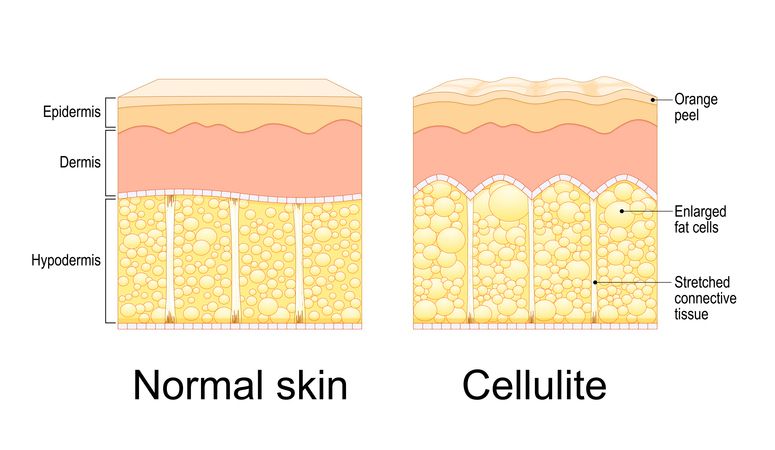
Author: Natalie Ng|Updated: 13 May 2025
Protein plays a big role in how your hair looks, feels, and holds up under stress. If your hair feels weak, looks dull, breaks easily, or struggles to grow, it’s often because it’s missing the structural support that proteins give. These building blocks help strengthen hair strands, protect the cuticle layer, and improve the way hair responds to styling, color, and environmental stressors. A protein treatment for hair can support repair from deep within the hair shaft, making brittle hair feel softer, fuller, and easier to manage. Whether your hair is fine or thick, color treated or dry, damaged from heat styling or chemical treatments—protein can help support its recovery. From salon options like keratin treatments to at-home protein treatments using hydrolyzed wheat protein, collagen, or rice proteins, the focus stays on giving your hair what it needs to stay strong. This article looks at how protein treatments affect different hair types, the way they work inside the hair structure, and why ingredients like hydrolyzed proteins, natural oils, and protein complexes make such a difference. Keep reading to learn how to repair damage, strengthen hair, and improve the overall health of your scalp and strands—with protein at the center of it all.

Signs Your Hair Needs a Protein Treatment

Visible signs of breakage
Hair that breaks easily is often lacking in protein. When protein levels in the hair shaft drop, the structure weakens, and the hair becomes more fragile. This shows up through broken pieces on your brush, on your clothes, or in the shower. You may also see split ends not just at the tips, but along the middle of the strand.
In some cases, individual strands form tight knots called single-strand knots or "fairy knots." These often occur on curly or coily hair types when the ends wrap around themselves. The hair becomes rough, dry, and uneven to the touch. These signs point to a compromised protein structure and signal a need for a protein treatment.
Changes in hair texture after washing
Another clear sign is the way your hair feels during and after washing. Hair that’s low on protein often loses its shape when wet. It may feel mushy, stretchy, or limp. These texture changes suggest that the internal protein structure inside the hair shaft has broken down.
If your hair feels like it’s coated or soft in a way that makes it hard to manage, this may indicate low structural support. These changes also slow down drying time. A protein hair treatment helps rebuild that internal strength, making hair more stable and easier to style.
Keep reading to learn about the ingredients that help repair damaged hair and support stronger, healthier strands.

Protein and Hair Structure
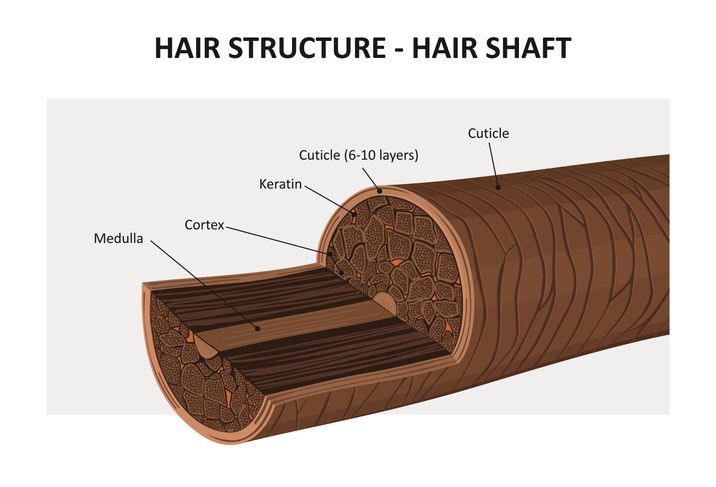
Importance of protein in hair strength
Hair is made mostly of protein. This includes keratin and other protein chains that hold the structure of the hair shaft together. When this structure breaks down, hair becomes weak and breaks more easily.
Heat styling, harsh chemicals, and UV exposure can damage protein in the hair. Over time, this causes brittle hair, dull texture, and thinner ends. A protein treatment helps repair this by restoring strength to the internal bonds of the hair strand.
Layers of the hair shaft
Hair has three layers: the cuticle, the cortex, and the medulla.
Cuticle
The cuticle is the outer layer. It’s made up of overlapping protein scales that protect the inner part of the hair. When the cuticle is smooth, hair feels soft and reflects light. When it’s damaged, it lifts and makes the hair rough, dry, and harder to manage.
Cortex
The cortex is the thickest part of the hair shaft. It holds most of the keratin and gives hair its strength, texture, and elasticity. A protein treatment targets this layer to help repair deeper structural damage caused by heat styling or chemical treatments.
Medulla
The medulla is the innermost part. Not all hair types have it. When present, it consists of loosely packed protein and air spaces. It plays a small role in hair strength but is still affected by severe damage.
Importance of protein balance
Protein treatments repair damage by filling in weak spots in the cortex and smoothing the cuticle layer. But too much protein can cause the opposite effect, making the hair stiff and prone to snapping. Dry hair, porous hair, and chemically treated hair often benefit from a protein boost, but it’s important to pair protein with deep conditioning and natural oils like argan oil, coconut oil, or shea butter.
Different hair types may need different protein levels. Low porosity hair, for example, may need lighter formulas like hydrolyzed rice protein or hydrolyzed wheat protein to avoid buildup. Medium hair and high porosity hair can usually handle a richer protein complex.
Regular use of the best protein treatment for your hair type helps strengthen hair, improve texture, and protect hair from further harm. Keep reading to see how protein treatments target breakage, improve softness, and support healthy hair growth.
Read More
Book Now to Experience
F8 Hair Regrowth Treatment
1 Minute Self-Registration
Date should not be before minimal date

Essential Protein Ingredients for Hair Repair
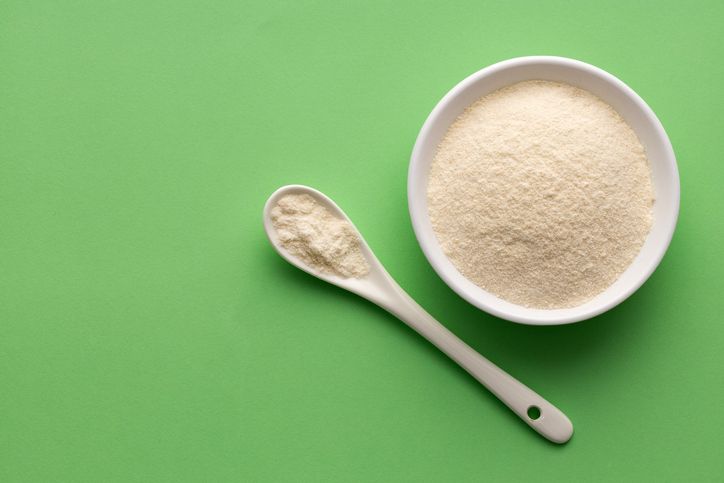
Importance of protein-based ingredients
For protein treatment to repair damaged hair effectively, it must contain ingredients that rebuild the internal structure of the hair shaft. These include both full protein molecules and hydrolyzed proteins, which are broken down into smaller fragments that can enter the hair more easily.
Proteins restore support to weak areas, reinforce the cuticle layer, and improve elasticity. When your hair lacks these key proteins, it becomes prone to split ends, thinning, and breakage. Targeted ingredients such as keratin, hydrolyzed collagen, and amino acid complexes help protect hair from further damage.
Keratin’s role in structure and strength
Keratin is the main structural protein found in the hair shaft. It forms the inner framework of each strand and protects it from external stress. Strong keratin bonds help the hair resist heat styling, UV exposure, and chemical treatments. When those bonds weaken, hair starts to fray, lose shape, and become more porous.
A keratin treatment helps by filling in gaps along damaged areas of the strand. It smooths the surface, making hair soft, shiny, and more resilient to further harm. This type of treatment works well for chemically treated hair and color treated hair that needs structural support.
Importance of amino acids for growth and repair
Amino acids are the building blocks of protein. Specific amino acids like cysteine, methionine, and lysine are especially important for hair growth. They support keratin production and help rebuild damaged areas of the hair shaft.
A protein hair treatment that includes amino acids helps restore strength at the root and along the strand. These compounds reach the hair follicle, support cell activity, and repair weakened sections of the cortex. Hydrolyzed rice protein, hydrolyzed wheat protein, and hydrolyzed corn protein are common sources of amino acids in protein hair treatments.
Plant proteins vs animal proteins
Protein treatments use either plant-based or animal-based proteins—or a combination of both. Each has a different effect on hair texture and strength.
Plant proteins
Ingredients like hydrolyzed wheat protein and soy protein have smaller molecules. They penetrate deeper into porous hair and support internal repair. These are ideal for low porosity hair that resists moisture and product absorption.
Animal proteins
Proteins like keratin and collagen form a coating on the outside of the hair. This helps protect the cuticle and reduce frizz. They offer visible results faster, especially for dry hair or hair damaged by heat styling.
Using both types together creates a more balanced treatment. Plant proteins support inner structure while animal proteins protect the outer layer.

Professional Keratin Treatments vs At-Home Options
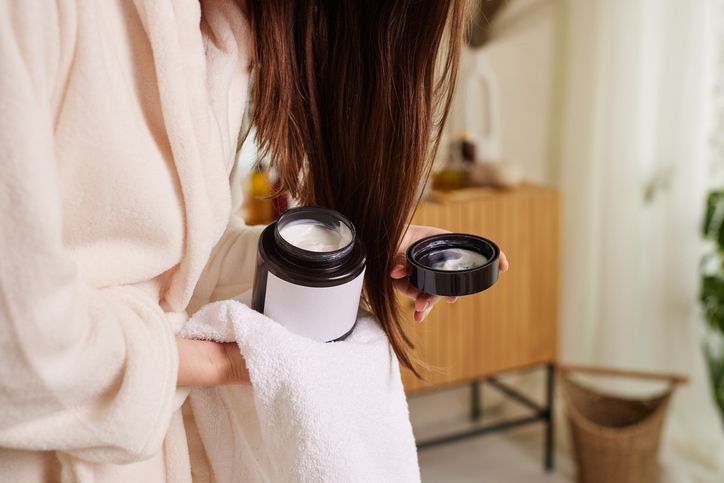
Differences in formula and strength
Professional keratin treatments use higher concentrations of active proteins and are applied using heat tools that help the product bind to the hair shaft. These salon treatments are designed to last longer—typically up to three to six months—and can significantly improve the condition of chemically treated hair, porous hair, or hair that has been damaged by frequent heat styling.
The protein complex used in professional treatments often includes keratin, amino acids, and additional oils like argan oil or baobab seed oil to seal the cuticle layer and make hair feel smoother and softer. These in-salon treatments are best for thicker or high-porosity hair types that need long-term repair.
At-home protein treatments for regular care
At-home protein treatments, while less concentrated, offer a practical solution for routine hair maintenance. These treatments usually come in the form of hair masks, leave-in conditioners, or lightweight serums that use hydrolyzed proteins such as hydrolyzed wheat protein or hydrolyzed collagen to strengthen hair without weighing it down.
They’re easier to apply, more budget-friendly, and safer for frequent use. For medium hair or low porosity hair, at-home options provide enough protein boost without overloading the strand. Products that include a mix of protein and moisture—like those containing shea butter or rosehip oil—are ideal for weekly use.
Choosing based on your hair’s condition
If your hair feels soft to the point of being weak, stretches when wet, or doesn’t hold shape, an at-home protein treatment is a good place to start. For damaged hair that has been chemically processed or is showing signs of extreme breakage, a professional keratin treatment may be needed for more intensive repair.
Each approach has its place, but the most effective results come from choosing what matches your hair’s current condition and needs.
Book Now to Experience
F8 Hair Regrowth Treatment
1 Minute Self-Registration
Date should not be before minimal date

DIY Protein Hair Masks with Everyday Ingredients
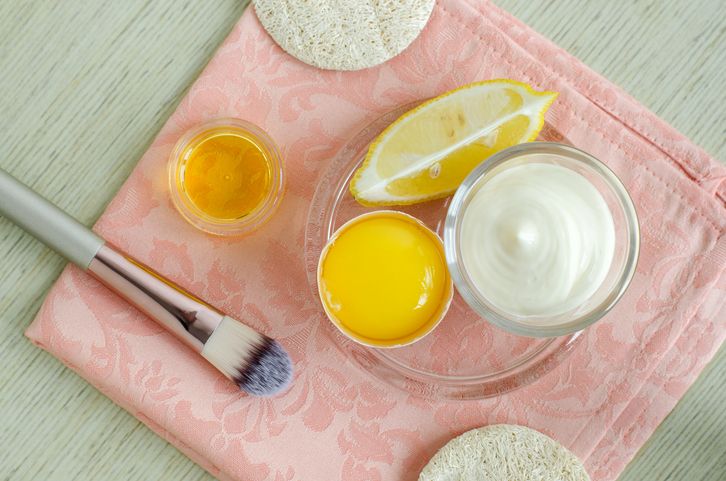
Simple combinations that support hair repair
You can make effective protein hair masks using ingredients already in your kitchen. These masks help repair damage in the hair shaft and improve hair texture when used consistently. By combining protein-rich foods with natural oils, you can restore structure without causing further harm from too much protein.
DIY masks work well for dry hair, color treated hair, and medium hair types that need extra support between salon visits or store-bought treatments.
Egg and mayonnaise mask
This mask helps rebuild damaged areas using proteins and healthy fats.
Ingredients
• 1 whole egg
• 2 tablespoons mayonnaise
• 1 tablespoon coconut oil
Instructions
Mix all ingredients until smooth. Apply to damp hair, focusing on mid-lengths and ends. Leave on for 20 minutes. Rinse with cool water and follow with a gentle shampoo. This blend supports the cuticle layer and helps soften brittle hair.
Avocado and yogurt mask
Avocado contains natural oils while yogurt adds protein and lactic acid to smooth rough strands.
Ingredients
• ½ ripe avocado
• 2 tablespoons plain yogurt
• 1 egg white
Instructions
Blend ingredients into a creamy paste. Apply evenly through the hair shaft. Cover with a shower cap and leave on for 25 minutes. Rinse well and allow hair to air dry. This mask is especially useful for low porosity hair that struggles to absorb heavier products.
Banana and honey mask
This option helps improve elasticity and shine while reducing breakage.
Ingredients
• 1 ripe banana
• 1 tablespoon honey
• 1 egg yolk
Instructions
Mash or blend until smooth. Apply from roots to ends. Leave on for 20–30 minutes, then rinse with cool water. This works well for hair that feels dry and lifeless but still needs protein support.
These at-home protein treatments can be used once every two weeks. Monitor how your hair feels after each use. If it starts to feel stiff or heavy, reduce the frequency or switch to moisture-based care until balance returns.

Balancing Protein and Moisture for Hair Health
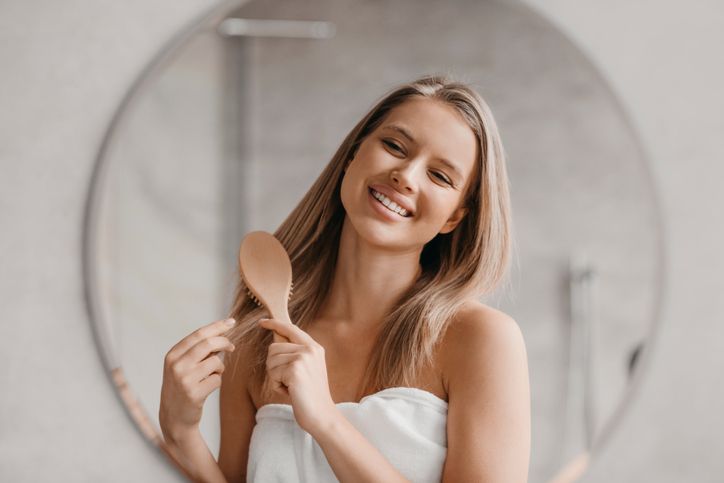
Why balance affects hair quality
Protein strengthens the internal structure of your hair. Moisture keeps it flexible and soft. Both are essential. When one outweighs the other, your hair’s condition changes in a way that’s easy to notice.
Too much protein makes hair feel stiff, rough, and dry. It may snap when touched or styled.
Too much moisture leaves hair limp, overly stretchy, and unable to hold its shape. It feels soft but lacks structure.
Signs your hair needs more protein
• Hair snaps easily without stretching
• It feels dry and hard to detangle
• The ends look frayed or rough
• It lacks bounce and strength during styling
Signs your hair needs more moisture
• Hair stretches too much when wet
• It feels soft but weak and doesn’t hold curls or styles
• It takes longer to dry than usual
• Hair feels mushy or overly flexible
How to adjust your routine
If your hair feels too soft, start with a light protein treatment such as hydrolyzed wheat protein or hydrolyzed rice protein. These ingredients work well for low porosity hair or fine strands that don’t need heavy repair.
If your hair feels dry or brittle, switch to a deep conditioner or use additional oils like shea butter, argan oil, or rosehip oil. Moisture helps soften the cuticle layer and reduces breakage from protein buildup.
Alternate protein and moisture treatments weekly or bi-weekly. Pay attention to how your hair responds. If it starts to feel rough or stiff, give it more hydration. If it becomes too soft or stretches without snapping back, add more protein.
Book Now to Experience
F8 Hair Regrowth Treatment
1 Minute Self-Registration
Date should not be before minimal date

Top Protein-Rich Products for Different Hair Types
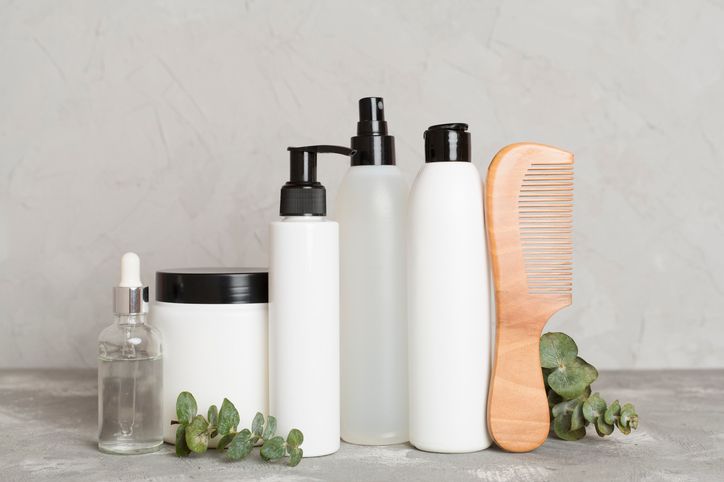
Choosing products based on texture, thickness, and condition
Each hair type responds differently to protein treatments. Choosing the right type of protein depends on your hair’s texture, porosity, and how damaged it is. Using the wrong kind—or too much—can lead to build-up, dryness, or even more breakage.
Here’s how to match protein products to your hair:
Fine or limp hair
Stick to lightweight formulas with small proteins like hydrolyzed wheat protein or silk protein. These strengthen the hair shaft without weighing it down. Look for mists or light leave-in products that don’t make the hair feel coated or stiff.
Medium hair
Products with keratin or hydrolyzed collagen work well to support elasticity and strengthen the structure. Use light protein masks or conditioners that repair damage without hardening the strands.
Coarse or thick hair
This hair type usually handles stronger treatments well. Choose masks with hydrolyzed rice protein, keratin, or blended plant proteins. These help reduce roughness, repair breakage, and soften the hair surface.
Low porosity hair
Go for light protein serums or diluted treatments using smaller proteins like hydrolyzed rice or wheat. These penetrate better without sitting on top of the strand. Heavy creams may lead to buildup.
Color treated or damaged hair
Repair masks and conditioners containing keratin, hydrolyzed proteins, and natural oils like rosehip oil or baobab seed oil are ideal. They help close gaps in the cuticle layer and bring back softness and shine.
Chemically treated hair
Use salon-grade protein treatments or masks with amino acids, keratin, and protein complexes. These help rebuild lost structure, reduce brittleness, and protect against further harm from heat or chemical exposure.
Choose protein-rich products based on what your hair needs—not just what the label promises. In the next section, we’ll look at common mistakes with protein treatments and how to avoid making your hair worse.

Common Protein Treatment Mistakes to Avoid

Using too much protein too often
One of the most common mistakes is applying protein treatments too frequently. When you overload your hair with protein, especially without balancing it with moisture, it becomes stiff and brittle. Instead of stronger hair, you end up with more breakage and dryness.
Hair that already has enough protein doesn’t need constant treatment. Reapplying when it’s not needed causes the hair shaft to harden. Over time, this makes the strands snap easily, especially when styling or brushing.
Ignoring moisture balance
Protein and moisture must work together. Many people forget to follow a protein treatment with a deep moisturizing step. Without moisture, protein can make the hair feel coarse and dry. If your hair feels rough or crunchy after a treatment, it likely needs hydration.
Alternate protein treatments with moisturizing masks or use a product that includes both. Look for formulas with natural oils like argan oil, coconut oil, or shea butter to maintain softness and flexibility.
Choosing the wrong type of product for your hair
Not all protein treatments work for all hair types. Heavy masks can weigh hair down, especially if it’s fine or low porosity. Lightweight formulas may not do enough for thick or porous hair. Pay attention to how your hair reacts. If it becomes dull or hard to manage, reassess your product choice.
Leaving protein on too long
More time doesn’t mean better results. Leaving a protein hair treatment on for longer than the label suggests won’t strengthen hair—it may cause buildup and dryness. Follow the instructions closely. Protein builds up in the cuticle layer, so timing matters.
Applying protein without assessing hair condition
Protein isn’t always the solution. If your hair feels dry, don’t assume it needs protein. It might just need moisture. Use protein only when you notice signs of damage, breakage, or elasticity loss. Applying it blindly increases the risk of further damage.
Next, we’ll show how to build a simple schedule to space out protein use, based on your hair’s condition and styling habits.
Book Now to Experience
F8 Hair Regrowth Treatment
1 Minute Self-Registration
Date should not be before minimal date

Building a Protein-Based Hair Care Schedule

Matching treatment frequency to your hair’s condition
Not every hair type needs the same amount of protein. The more damage your hair has—from heat styling, chemical treatments, or coloring—the more support it needs. On the other hand, hair that’s healthy or hasn’t been processed much may need protein far less often.
Instead of following a fixed schedule, base your treatment timing on how your hair feels and reacts after each application. Pay attention to texture, strength, and elasticity. These signs will guide when to apply the next protein boost.
For chemically treated or heavily damaged hair
Use a protein treatment every 4 to 6 weeks. Damaged strands often have gaps in the hair shaft that need regular repair. Choose deep masks or salon-level products with keratin, hydrolyzed collagen, or amino acids. Always follow up with moisture-rich products to keep the hair soft and flexible.
For healthy or untreated hair
Space protein treatments every 8 to 10 weeks. Your hair doesn’t need frequent rebuilding, so lighter products like protein sprays or leave-ins will provide enough support without overloading the strands.
For high porosity hair
Apply light to medium protein treatments every 3 to 4 weeks. High porosity hair tends to lose protein quickly. Hydrolyzed rice protein, hydrolyzed wheat protein, and protein-enriched masks help refill those gaps and reduce breakage.
Supporting treatments between sessions
Use protein-infused shampoos, conditioners, or leave-in sprays between full treatments to maintain results. Avoid layering multiple protein products on the same day unless your hair is extremely damaged. Always watch for changes in hair feel—if it gets stiff or too soft, adjust your routine.

Maintaining Results: Long-Term Protein Hair Care
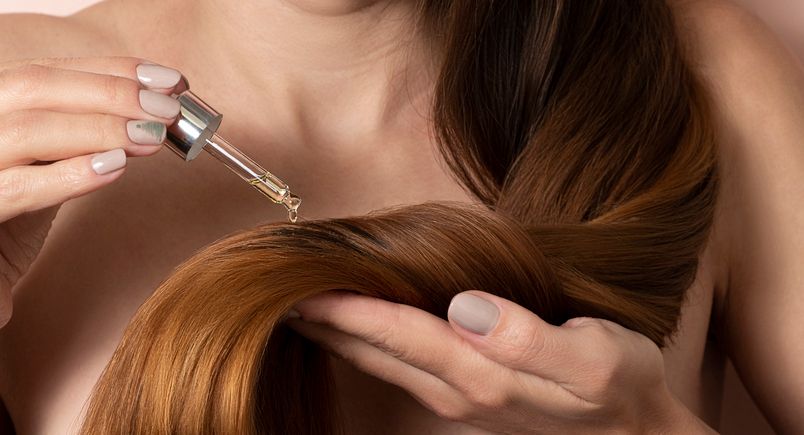
Why regular maintenance helps
One protein treatment can improve the way your hair feels, but consistent care is what makes the results last. Hair continues to face stress every day—heat styling, brushing, sun exposure, and even weather can wear it down. A regular routine helps protect the hair shaft and support long-term strength, especially if your hair is already dry, chemically treated, or prone to breakage.
Protein care isn’t about using more products—it’s about using them at the right time and in the right amount.
How to build a long-term plan
Start by creating a simple rotation that balances protein and moisture. This prevents overload while keeping your hair supported.
Weeks 1–2
Use a light protein treatment like a leave-in or spray once a week. Focus on maintaining strength. Follow up with daily moisture from lightweight conditioners or natural oils.
Weeks 3–4
Apply a medium protein treatment, such as a mask or cream-based product. After rinsing, use a deep conditioning treatment. Watch how your hair feels. If it starts to feel hard, space out your next protein application.
Weeks 5–6
Take a break from protein. Focus fully on hydration with moisture-rich masks, softening oils like coconut oil or rosehip oil, and gentle cleansers.
Weeks 7–8
Apply a stronger protein treatment if your hair feels weak again. This step is most useful for high-porosity or processed hair. End with a moisturizing conditioner.
Track your results
Pay attention to:
• How your hair responds after each step
• Any signs of stiffness, dryness, or stretchiness
• Changes in hair texture, elasticity, and how it holds styles
Adjust your routine based on what you feel. If hair becomes too hard, pull back on protein. If it starts stretching too much when wet, it’s time for another treatment.
This rotation keeps your protein level balanced while protecting against further damage. When used the right way, protein treatments don’t just repair—they help maintain the overall health of your hair.

Support Protein Results with F8 Hair Regrowth Treatment
Boosting the effects of your protein routine
Protein treatments repair damaged hair strands from within, but for long-term improvement in hair growth, scalp health plays just as big a role. F8 Hair Regrowth Treatment complements your protein hair care routine by targeting the source: the hair follicle and surrounding scalp environment. It strengthens not just the hair shaft but also the scalp’s ability to support new growth.
If you’re already using a protein treatment for hair, combining it with F8 can enhance the results. This treatment helps deliver nutrients more efficiently to the hair follicle, improves blood circulation, and creates a balanced, healthy scalp that supports thicker, stronger hair.
What is the F8 Hair Regrowth Treatment?
F8 is a non-invasive hair and scalp treatment that uses low-energy laser and targeted hair growth serum. It’s designed to strengthen the hair papilla, activate dormant follicles, and improve scalp condition—all key factors in hair growth and repair. The laser energy improves microcirculation in the scalp, which means better nutrient delivery to the follicles. This helps improve hair texture, reduce shedding, and support healthy hair growth.
How F8 works
• A trained expert first examines your scalp and hair follicles at high magnification to identify thinning areas and assess follicle health
• Low-energy laser is applied evenly across the scalp. This stimulates circulation, strengthens hair follicles, and boosts the surrounding capillaries
• A hair growth serum is then applied, made to absorb deeply into the scalp while the laser energy enhances its penetration
• The serum hydrates the scalp, balances oil levels, and clears blocked follicles—improving conditions that often slow down or weaken hair growth
Why F8 supports protein repair
Protein treatments focus on rebuilding the hair strand. F8 helps maintain the scalp environment that allows those strands to grow stronger. By increasing blood flow, F8 improves the delivery of essential nutrients that proteins rely on to repair and protect the hair shaft. The result is more resilient hair from root to tip.
F8 also improves moisture balance, which helps prevent dryness caused by too much protein. This makes it a good match for anyone following a protein-heavy hair care routine—especially if you’re dealing with dry hair, color treated hair, or signs of hair loss.
Advantages of F8 Hair Regrowth Treatment
• Safe for all hair types
• Non-invasive with no downtime
• Helps control excess sebum
• Stimulates blood circulation and follicle activity
• Enhances protein treatment benefits by improving nutrient delivery
• Supports hair growth and improves scalp comfort
Book your session
If you’re using protein treatments and want to support stronger, fuller hair, F8 is a smart next step. It strengthens the foundation beneath the hair shaft and promotes long-term results.
Book your consultation now to learn how F8 Hair Regrowth Treatment can support your hair repair and growth goals.
New Beauty's F8 Hair Regrowth TreatmentBook Now to Experience
F8 Hair Regrowth Treatment
1 Minute Self-Registration
Date should not be before minimal date
FAQ
1. Can I use a protein treatment for hair and F8 Hair Regrowth Treatment at the same time?
Yes, you can safely combine both. A protein treatment works on the hair shaft to rebuild strength, while the F8 Hair Regrowth Treatment focuses on scalp health and improving circulation to the hair follicle. Using both supports healthier hair growth from the root and strengthens hair strands from the inside out. Just make sure to space treatments across different days to avoid overwhelming your scalp or hair.
2. How do I know if I have too much protein in my hair?
If your hair feels stiff, dry, or breaks easily even when moisturized, it could be a sign of protein overload. Too much protein can cause the hair cuticle to harden, which makes strands more brittle. Rotate protein treatments with deep conditioning masks or moisturizing products to avoid this issue. This is especially important for those with low porosity hair, which can hold onto proteins longer.
3. Do hydrolyzed proteins really make a difference in hair products?
Yes. Hydrolyzed proteins like hydrolyzed wheat protein, hydrolyzed collagen, and hydrolyzed rice protein are broken down into smaller molecules that can penetrate the hair shaft more effectively. These proteins support repair from within, especially in dry hair, porous hair, and chemically treated hair. They’re more effective than whole proteins, which often sit on the surface without entering the strand.
4. Is protein treatment good for color treated hair?
Protein treatments are especially helpful for color treated hair. Coloring can damage the cuticle layer and weaken the internal structure of the hair shaft. A protein hair treatment helps restore strength, improve texture, and protect hair from further damage. Choose a formula that also includes moisturizing ingredients to prevent the hair from becoming too dry after color services.
5. Will protein treatment help with hair loss?
Protein treatments support hair strength and may help reduce breakage-related hair loss, but they don’t treat hair loss at the follicle level. If you’re experiencing thinning or hair shedding at the root, combining a protein boost with a scalp-focused treatment like the F8 Hair Regrowth Treatment is more effective. Protein improves hair texture and durability, while F8 stimulates blood flow and helps energize the follicles responsible for new growth.
Recommended Articles
COPYRIGHT© NEW BEAUTY MANAGEMENT LIMITED 2025. ALL RIGHT RESERVED.

